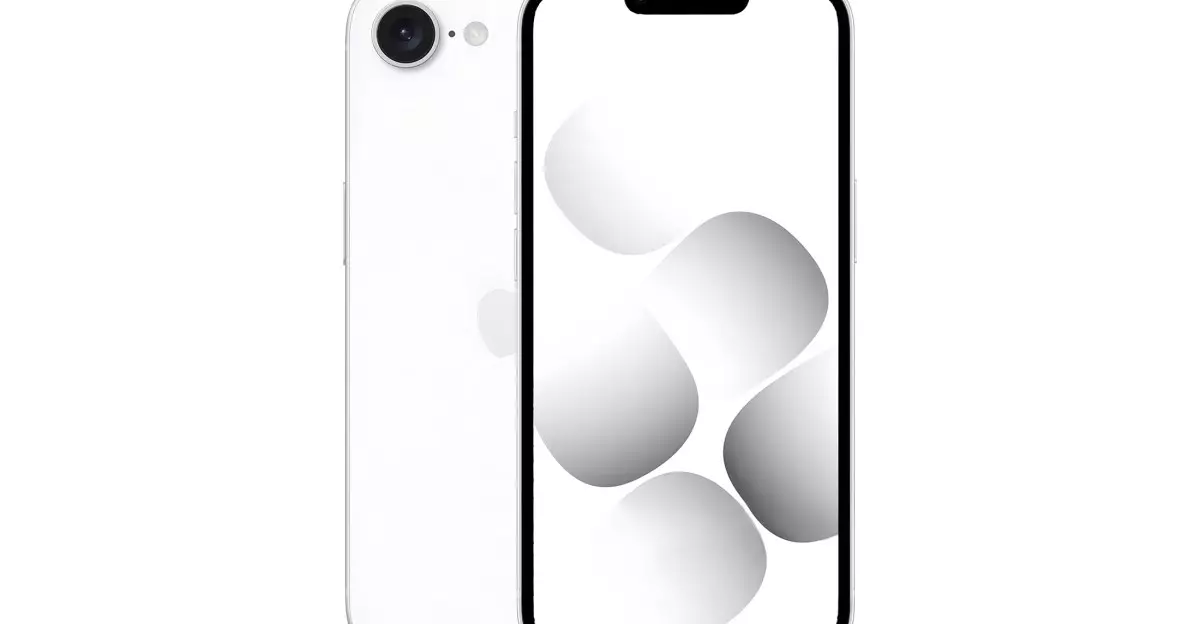Apple is set to embark on a new journey with its iPhone SE series, potentially unveiling the latest model as early as next week. This forthcoming iPhone is expected to be a game changer in the affordable segment, promising features that will bring it closer to flagship offerings while maintaining a competitive price point. The anticipation surrounding this device is significant, not just for its features, but for how it represents Apple’s evolving strategy in a highly competitive smartphone market.
Since the inception of the iPhone SE in 2016, the model has maintained a nostalgic charm, largely retaining the design elements reminiscent of earlier iPhones, which included the iconic home button. However, as consumer preferences shift towards modern aesthetics and technology, Apple appears to be finally embracing these changes. This move signals a pivotal moment for the SE line, aiming to attract consumers who seek a balance between affordability and advanced features.
The most notable change anticipated with the new iPhone SE is the redesign that aligns it more closely with the iPhone 14’s look. Reports suggest that the classic home button will be discarded in favor of Face ID technology, a feature that has become a staple in Apple’s recent flagship devices. This shift not only modernizes the design but also enhances user experience by integrating a seamless facial recognition system that adds both security and convenience.
The incorporation of a notch to house the Face ID sensors signifies a departure from the previous design, which relied on a larger bezel. While the SE has historically targeted budget-conscious consumers, its upcoming design resembles that of premium models, hinting at Apple’s attempt to bridge the gap between price and top-tier technology.
The device is expected to feature a 6.1-inch OLED display, a substantial upgrade from the 4.7-inch panel of its predecessor. This larger screen will provide consumers with a more immersive experience, catering to the increasing demand for larger display sizes in smartphones. The OLED technology will further enhance color vibrancy and contrast, solidifying the SE’s position as a formidable competitor in the mid-range market.
While the iPhone SE has traditionally featured a single rear camera configuration, reports suggest that the upcoming model will sport a 48-megapixel rear sensor coupled with a 12-megapixel front camera. This improvement in camera technology is significant, as it would provide users with sharper and more detailed images, thus appealing to photography enthusiasts looking for a budget-friendly option.
However, even with advanced camera specifications, it appears that Apple will retain some of the limitations associated with the SE model, such as the absence of multiple rear cameras and the more sophisticated Camera Control features seen in the iPhone 16. Such decisions indicate that Apple is still positioning the SE line as an entry-level smartphone while introducing selective advancements that do not fully match flagship capabilities.
On the internal front, the new SE is rumored to be powered by the A18 chip, the same tech found in the iPhone 16 series. This upgrade is noteworthy as it provides the SE with processing power that exceeds even that of the iPhone 15, potentially making it one of the strongest entries in the affordable market. Paired with an increase to 8GB of RAM, consumers can expect a smoother, more responsive experience, especially when utilizing Apple’s AI tools.
Another significant advancement is the expected transition from Apple’s proprietary Lightning connector to a USB-C port. This change is not merely cosmetic; it reflects broader technological trends and regulatory pressures, particularly in markets like the EU where stricter standards are being enforced. The switch to USB-C also signifies Apple’s drive for a more universal standard, catering to a growing ecosystem of accessories and devices.
Importantly, the new SE is anticipated to support Apple’s first in-house 5G modem. Although early reports indicate that this modem may not support certain high-frequency mmWave bands, it still marks a crucial step in Apple’s long-term strategy to gain independence from Qualcomm and establish itself in the modem development arena.
The pricing strategy for the new iPhone SE remains a topic of much speculation. Analysts predict a price point in the vicinity of $500, which is a notable increase from the previous model. This price adjustment could be offset by offering 128GB as the base storage option, thereby eliminating the less desirable 64GB variant from Apple’s lineup.
Additionally, there is speculation regarding the potential rebranding of the SE line, with some suggesting it might debut as the iPhone 16E. Whatever the name, the upcoming release represents Apple’s concerted effort to attract a wider audience while still catering to its loyal customer base seeking affordability without forfeiting quality.
As we await the official announcement next week, the upcoming iPhone SE promises to redefine what consumers can expect from affordable smartphones. By blending high-end features with accessible pricing, Apple is not only meeting current market demands but also setting the stage for a new era in its smartphone offerings.


Leave a Reply